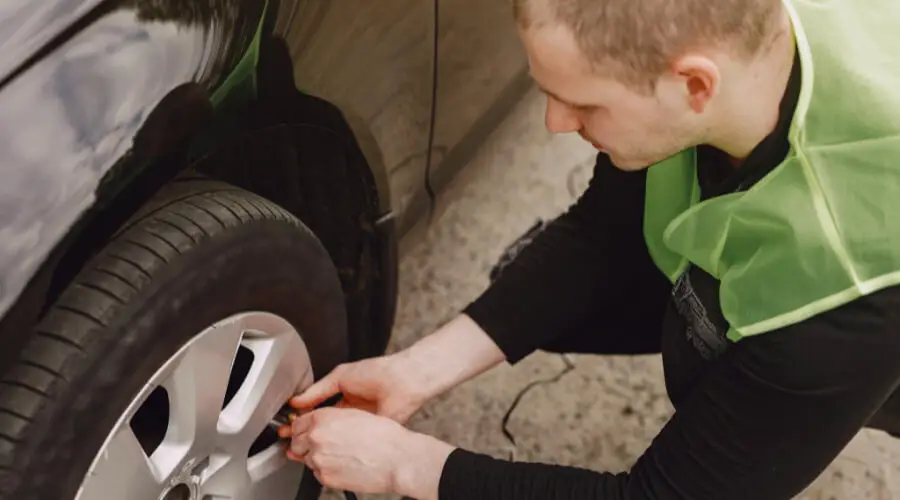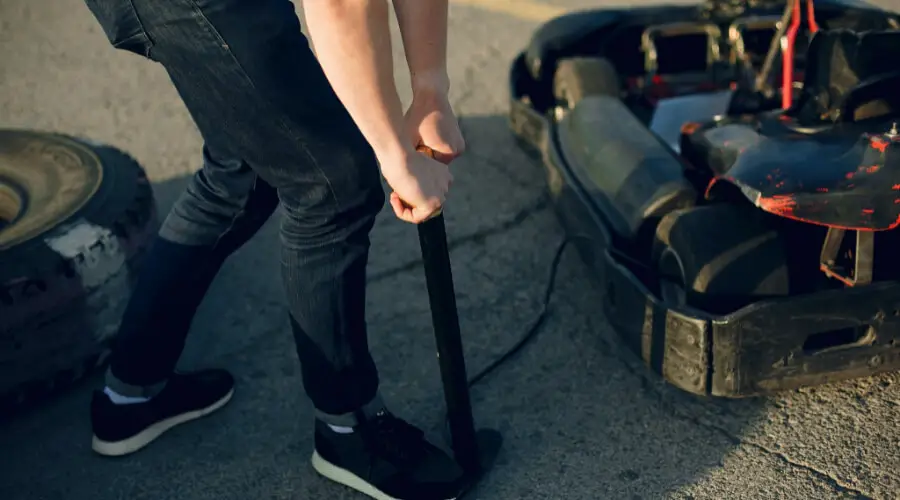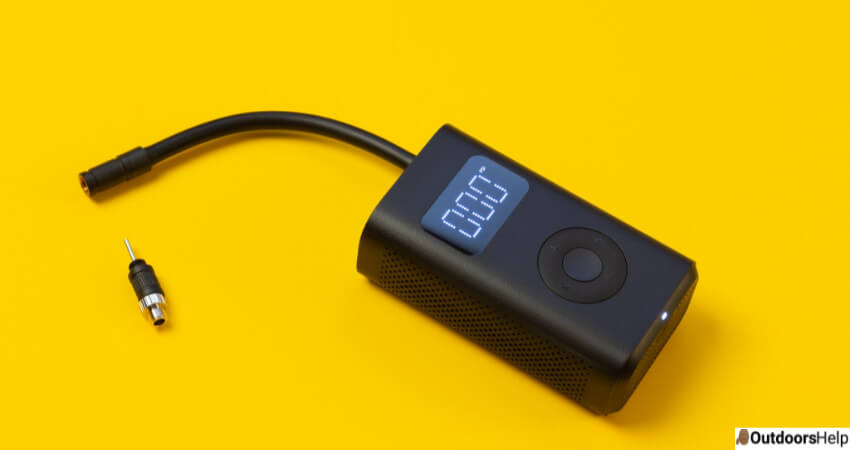Desperate measures counter desperate situations. Imagine you are at home and when about to depart for the office, you realize that your car tires have insufficient pressure and the only accessible tool around your garage is a bike pump. Can it accomplish the task? Yes, your Schrader-equipped bike pump is handy to inflate your car tires, but be prepared to spend extra time to accomplish the task.
What Is The Importance Of Sufficient Pressure In A Car Tire?

Perhaps you have wondered why motorists keep checking their car tire’s pressures whenever they are refilling their gas thanks at a petrol pump. Do you know why they strive to ensure that their car tires have sufficient and balanced pressure?
Properly inflated tires have numerous benefits such as enhancing the car’s performance, minimizing uneven tire wear, and reducing fuel consumption. Generally, tires with balanced pressure roll smoothly on the surface.
This article highlights a step-by-step guide to enable you to inflate your car tire with a bike pump when in a dire situation. Read on!
A Guide On How To Inflate Your Car Tire Using A Tire Pump

If you are equipped with your Schrader equipped bike pump, here are the steps you must follow to inflate your car tires successfully:
1. Park Your Car On A Flat Surface
Ensure you park your car in a clear place with a flat surface. The essence of choosing a clear and flat area is that nothing hinders you from moving around the car to fill pressure on all tires. A flat surface also enables you to balance the bike pump for easy operation. Suppose your homestead doesn’t have a clear and flat surface, consider parking in the street or the driveway.
Regardless of the situation, driving on flat tires is loathed. Why so? You might be a bold type and opt to drive to work on a flat tire, but be aware that the repercussions are detrimental to your car and finances. How? Flat tires cause expensive damages by deforming your wheel’s rims and the tire itself.
2. Unscrew Valve Caps
After parking your car on a clear and flat surface, unscrew the valve caps from all tires. If you are new to cars, check the valve caps at the sidewalls of the tire. They are positioned close to the metal of the wheel’s rim.
To ensure that you don’t lose the valve caps, keep them in a sealed plastic container.
3. Determine Your Tires’ Recommended Pressure
Tire pressure is determined in pounds per square inch (PSI). If you are unsure of the recommended tire pressure, check a sticker inside the driver’s door. All cars come with a sticker inside the driver’s door indicating the right amount of tire pressure for that specific car.
If the sticker is unavailable or unreadable, don’t stress yourself, your car’s manual has the required information concerning the tire pressure.
If you don’t find your car’s manual and the door sticker, you can search for information about your tire’s optimal pressure online. Be aware that some vehicles come with different recommended tire pressures for the front and rear tires.
4. Attach Your Bike Pump To The Car’s Tire Valve
When attaching your pump to the tire, ensure that you position the valve end of the pump over the tire’s valve.
Check to ensure that the lever at the back of the valve touches the hose before pressing the pump valve confidently into the car valve.
If you are satisfied that the pump valve is in place, raise the lever and lock the pump into the tire valve.
It is common to hear air escaping while locking the pump to the tire valve.
5. Inflate Your Tire
Inflating your car tire using a bike pump demands patience. Steadily raise and lower the pump’s bar, bearing in mind that it has to consume your elbow juices before attaining the recommended tire pressure. Check the pressure reading at intervals to avoid overfilling your tires. If you overfill the tires, their integrity is compromised as they will experience some strain.
Observe the following when inflating your car’s tires:
1. Adhere to the recommendations by the manufacturer, and desist from inflating your tires with 5PSI less or extra than recommended.
2. Generally, a bike pump takes longer to inflate your tire to the recommended amount than the compressor; hence be advised to exercise patience while performing the task.
6. Adjust Tire Pressures
If you realize that you have overinflated your car tire with air, press the pin at the center of the valve to the valve’s side using a pressure gauge or any other available tool. This action ensures that air escapes from the tire.
While releasing pressure, regularly check to avoid releasing too much pressure as this might force you to pump again.
Repeat the inflation process in all tires, but ensure that you stick to the recommended tire pressures from the manufacturer.
You should be conscious that inflating your tires with an imbalanced amount of pressure increases the chances of them wearing off quickly and negatively impacts fuel consumption.
Troubleshooting & Precautions
When inflating your car tires, observe the following:
1. Don’t Use Pressure Gauges Attached To The Air compressors
Gauges attached to the air compressors often give an inaccurate reading, and they wear off easily. Consider using a different pressure gauge to determine the optimal pressure of your tires.
2. Ensure The Pump Valve Is Securely Fastened
Check to confirm that the pump and tire valves don’t sit poorly since they might create a gap for air escape.
3. Check The Pump’s Hose For Leaks
The hose of a bike’s pump might break down over time. Inspect it to ensure it doesn’t have cracks that might allow air to escape while you are pumping.
Conclusion
Driving with well-inflated tires enhances the car’s performance and reduces cases of tire and rim wear. If you find out that your tires don’t have enough pressure and the only tool within reach is the bike pump, don’t panic, follow the above guide, and you will drive off with a smile.

